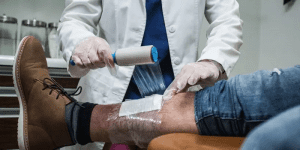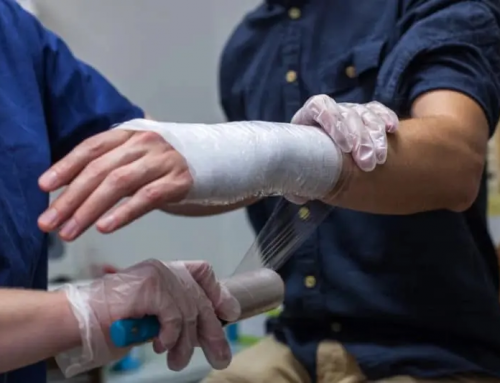There are a variety of ways to do wound care at home. Some involve the use of specific wound dressings, and others entail several wound care techniques. Although there is no absolute way of accelerating tissue repair for all types of wounds, certain concepts can be more effective than others. Proper wound care, in general, always depend on the type of injury, its size, location, and other factors.
This article will give you information on caring for wounds at home. Written below are the do’s and don’t of wound care at home, as well as preventive measures to lower the risk of wound infection and complications.
Do’s of wound care at home
Here are the things that you SHOULD DO to promote wound healing, including preventive measures to avoid contracting harmful microorganisms.
- Immediately irrigate the wound by holding it under running water
- Use mild soap in cleaning the wound site, then rinse with running water and then gently pat dry
- Apply petroleum jelly on the exposed wounds to keep moisture and speed up the process of wound healing
- You can leave small cuts, abrasions, and scrapes uncovered
- If appropriate, you can use SealSkin medical wrap for wound care to cover sensitive areas
- Check wound appearance and note any signs and symptoms of wound infection such as swelling, unusual wound discharge, redness, pain or tenderness, and if the area feels warm to touch (also, take note if the wound edges separate or reopens)
- Cover a large, exposed wound to avoid dirt and bacteria from entering the site
- Replace wound dressing as necessary
- If you are sensitive to adhesive or wound care tapes, use a gauze pad and secure it with a transparent wrap – SealSkin medical wrap is great for protecting the wound and keeping it clean
- Protect your wound from re-injury until it has healed completely
- Only take a bath or shower if you can keep the wound dry

Don’ts of wound care at home
Here is a list of what you SHOULD AVOID in performing wound care at home. Following the tips below can help reduce the risk of wound infection and complications.
- Apply a topical antibiotic without consulting a physician
- Douse a small scrape or any minor wound with commercial antiseptics such as iodine. Recent studies show that iodine can delay wound healing
- Scratch, pick, or rub the wound site
- Touch your wound with your bare hands
- Take a bath without wound protection
- Soak or scrub the wound because the tissue might reopen
- Put soap, body lotion, shower gel, powder, cologne, make-up, or other cosmetic products directly on your wound

When to See your Doctor:
Now that you know some of the do’s and don’ts of wound care at home, you should also know when to contact a primary care physician. Not all wounds can be treated at home. The list below are some indications of when you should go to a wound center, after performing first aid at home.
Go to the nearest wound care clinic when:
- Your wound comes from a rusty or dirty object
- The wound is a result of an animal bite
- Wounds are a quarter inch deep
- The wound won’t stop bleeding even after putting direct pressure for over five minutes
- You think your wound requires stitches or skin staples
- The wound is on the face, or there is a head trauma
- The edges of the wound are jagged or can’t be brought together
- You suspect signs and symptoms of serious wound infection
Signs and Symptoms of Wound Infection:
If you notice any of the following, go to the nearest medical facility, and seek professional wound treatment.
- Redness of the skin surrounding the wound
- Increasing pain
- Unusual wound discharge or drainage
- Warmth
- Swelling
This article on the do’s and don’ts of wound care at home is not intended to replace professional medical advice. Do not completely rely upon or use the information to diagnose all types of wounds. If you are unsure or have other concerns, seek medical assistance from a medical professional.






